Artist based in Switzerland

Joanna Wierzbicka, Portrait of the Artist
Tell us about yourself, what's your background?
I am an interdisciplinary artist from Poland, I work across photography, sculpture, installation, and video. Just before summer, I have completed a master’s degree in Photography at ECAL, The ecole cantonale d'art de Lausanne in Switzerland.
I remember, as a kid, I always wanted to do something creative and I also remember how much I didn't want to become a teacher. It sounds very random, but there were just so many teachers and links to schools in my family that I intuitively started thinking of different paths. And funny enough - now working as an educator within academia is one of my goals.
Coming back to the journey - since an early teenager time I was drawn to photography, probably a big part of that was the context of Tumblr era so obviously in the beginning it was rather a way of having fun after classes, but my interest was actually growing fast. I had more passion for photography than for other mediums I was trying at the time so I decided to move to London, where I did in BA in Fashion Photography at LCF, University of the Arts. After a few years of working mostly within fashion photography, I realised I needed a space for a different exploration. I took a step away from fashion photography, moved to Switzerland, and started MA, during which I developed a sculptural approach to photography.
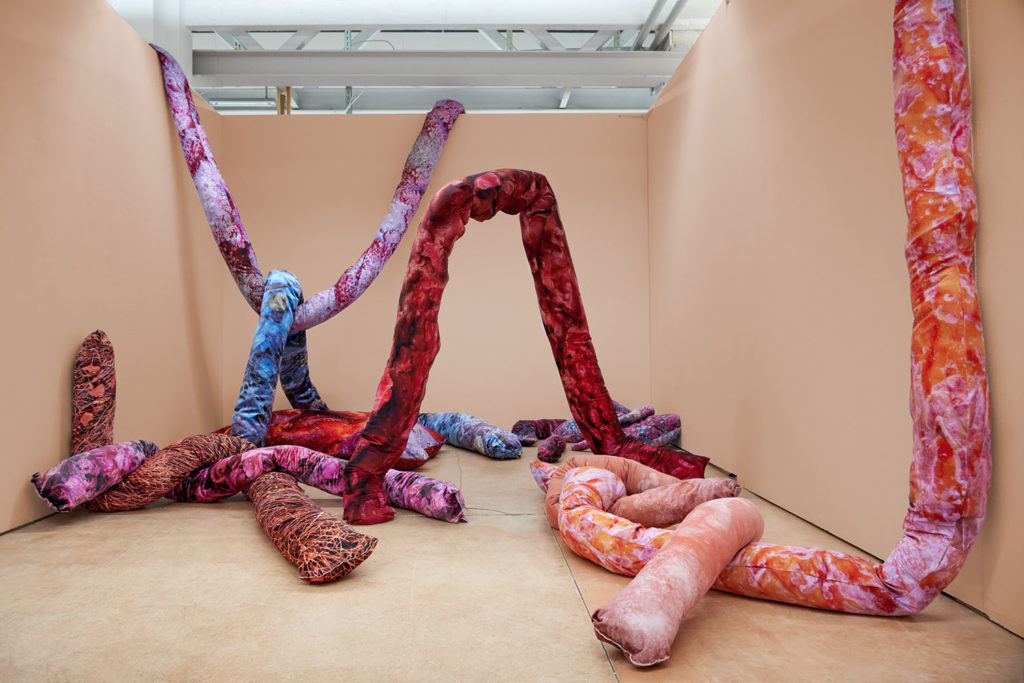
Lactobacillus Crispatus, Lactobacillus Iners, Lactobacillus Jensenii or Lactobacillus Gasseri installation, 2021, digital print on velvet fabric, cotton wool
"Through the exploration of our ongoing intra-activity between human and non-human, I question the anthropological understanding of our bodies as distinctively human and observe how we co-emerge with other forms of matter dancing between different agencies."
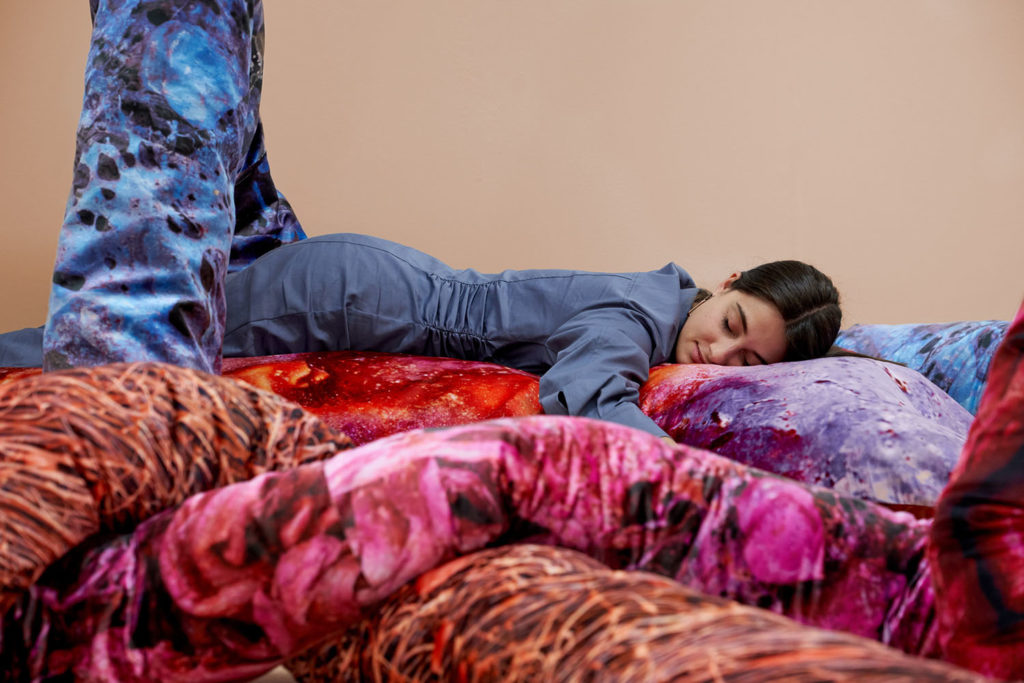
Lactobacillus Crispatus, Lactobacillus Iners, Lactobacillus Jensenii or Lactobacillus Gasseri installation, 2021, digital print on velvet fabric, cotton wool
What are you currently working on and where did the inspiration for it come from?
I'm developing/revisiting an already started project focusing on medical imagery, for which I appropriated medical images of my own body and created a series of fictional 3D organs.
I was interested in the specific reality medical images produce, how often they can be inaccessible without the use of a professional medical language. Certain processes, such as MRI scanning help us get to know our bodies, however, they create abstract visual information derived from data that is completely ungraspable. Medical images are somehow treated as a window onto a body; there is a promise of a visual evidence privileging vision among other senses. Bodies are directly connected to images with the technology as an extension of the observation process. Medical images influence and inform our seeing; it is almost a machine vision, through which once seeing a sonogram, you automatically start looking for fetus-like shapes.
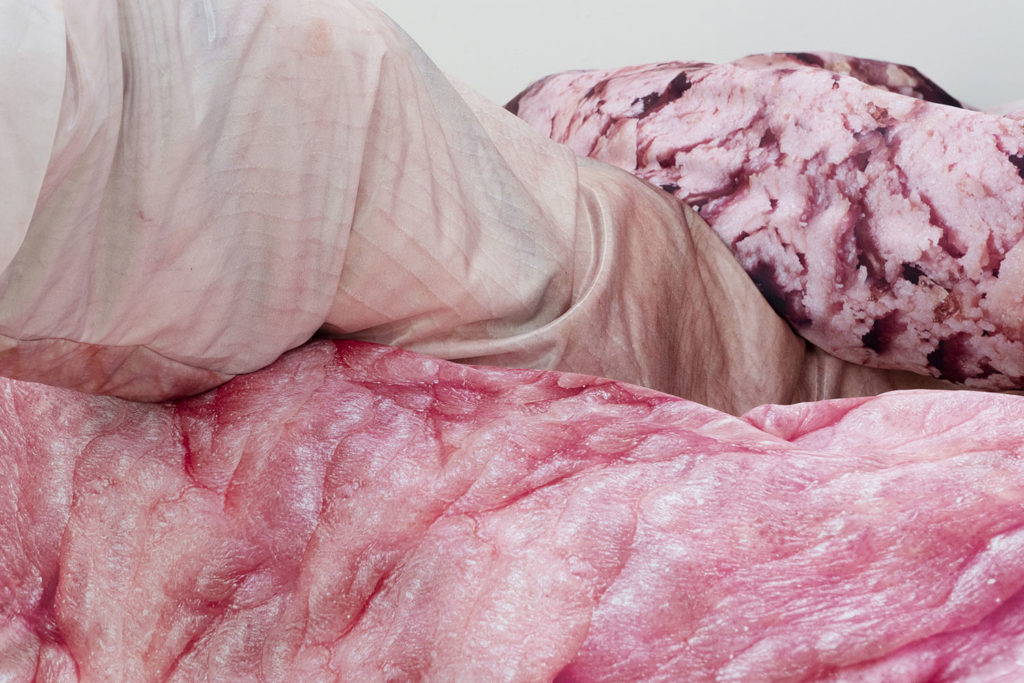
Nothing is connected to everything; everything is connected to something; installation, 2021, digital print on satin fabric, steel, liquid latex, cotton wool, chicken wire
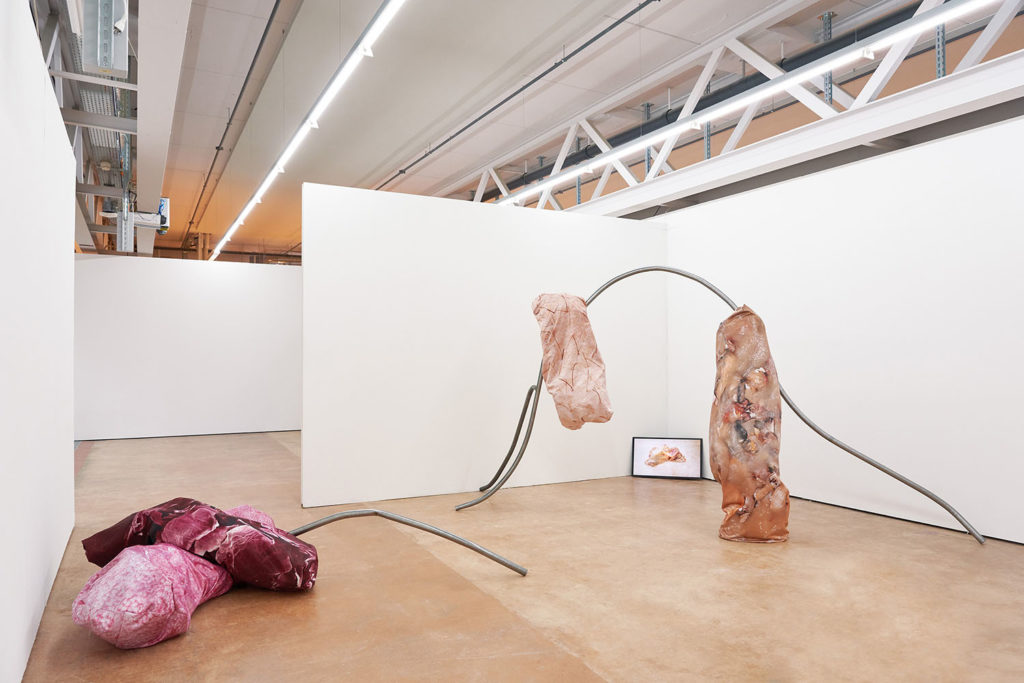
Nothing is connected to everything; everything is connected to something; installation, 2021, digital print on satin fabric, steel, liquid latex, cotton wool, chicken wire
Innovation does not only happen in the field of technology — it occurs everyday in an artist's practice. What do you do for inspiration?
I just stay open - listen, read, walk, look around, ask questions and do a somatic practice of listening to the body.

Studio view
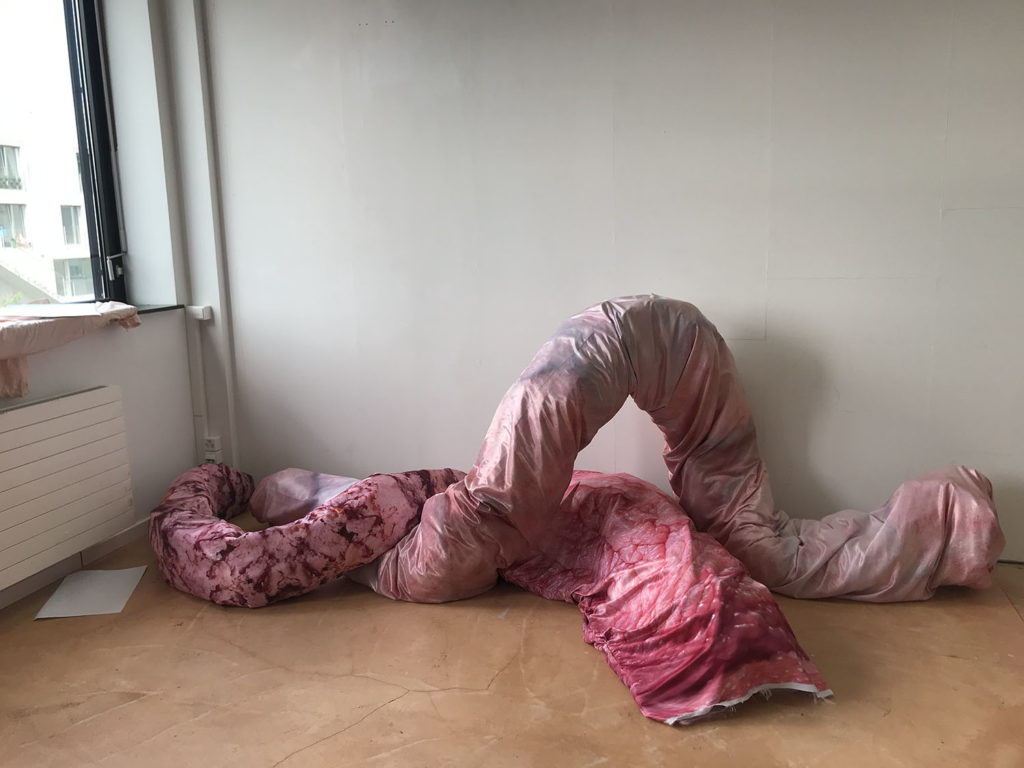
Work in Progress
Describe your practice and process. Where do ideas start for you? In the studio or being in the world?
My practice focuses on the body within the feminist posthumanities mode of thought. It is often process-driven, built upon back-and-forth conversations between different representations. Through the iterative process of sculpting, photographing, (with the use of different apparatuses including microscopes and medical scans), printing, and then sculpting again, I search for the physicality of forms that together can create a fully immersive environment - awakening bodily experiences, evoking haptics, and engaging the sense of touch.
Our bodies and how we relate to them are never-ending sources of inspirations. My work is centred around the experience of embodiment and the materiality of our bodies. I am interested in their fluidity, porousness, and trans-corporeality, asking where the bodily boundaries are and why should they be determined by the skin. Through the exploration of our ongoing intra-activity between human and non-human, I question the anthropological understanding of our bodies as distinctively human and observe how we co-emerge with other forms of matter dancing between different agencies.
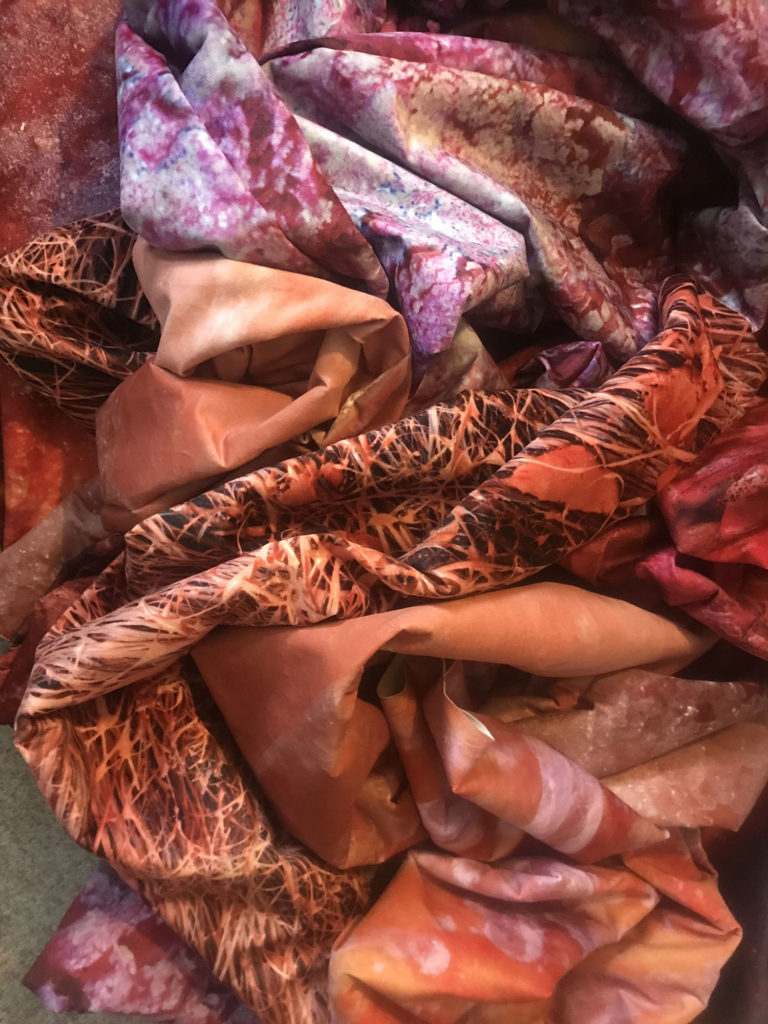

Work in progress
How do you make your work, does it start with a sketch? Can you tell us about your style? How did you arrive at it?
Obviously it slightly varies depending on the project, but I always start with an in-depth research around the initial question/starting point. Even though my practice is based on process, material explorations, the very first research-based step of each project is particularly important. I read, make notes, listen to interviews, make mind maps etc. Having said that, it is crucial to me to stay relevant and have a good balance between academic discourse around the body and lived experience of people. There should not be any binary between the two, therefore, I aim at creating installations, environments, ideas that facilitate and encourage further explorations and experiences of embodiment.
After clarifying what I want to explore in the project, I start the material exploration and get messy around the studio. Very often next step is preparing what I later photograph - make improvised sculptures, compositions of materials, paintings of fluids etc. This stage might also include photographing as well collaborating with medical insitutions in order to access specific type of apparatuses. After finishing shooting, I print and start creating small mocks-ups before moving on to the real size and think of other materials to be incorporated in the project. I experiment, I test, I fail I try again and through the process, find answers. Depending on the project, I might work on a video part simultaneously, for which I work on movement and costume too. At that point everything slowly comes together and there is also a space for technical issues and any additional aspects for instance collaboration with a sound designer.
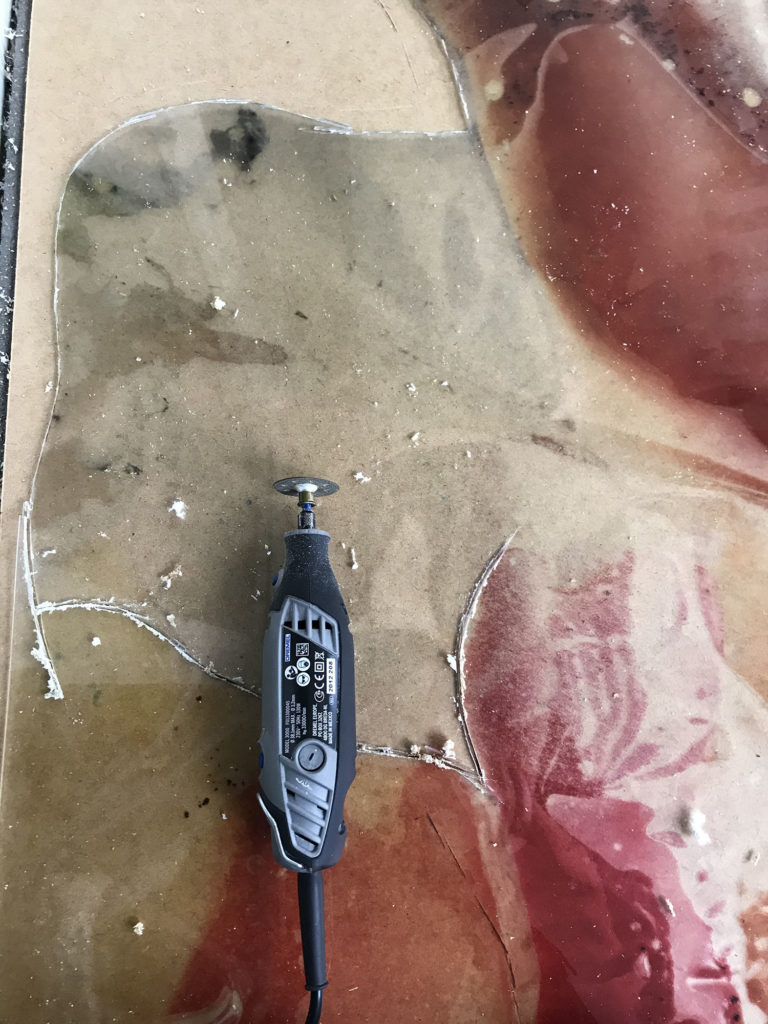
Work in progress
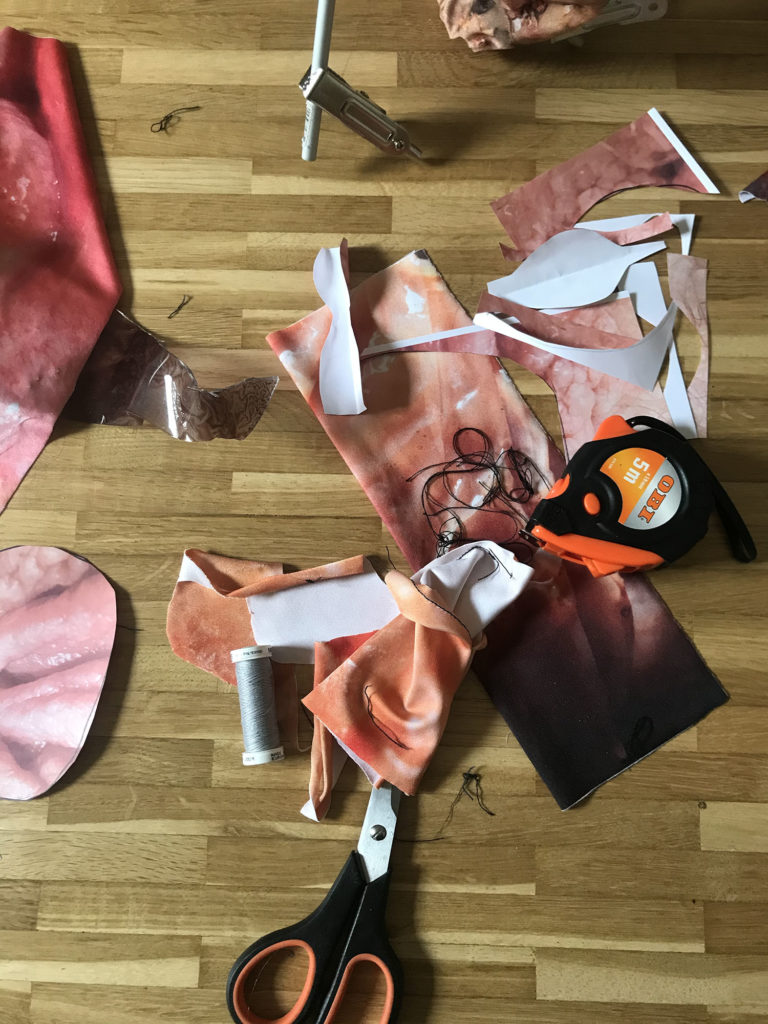
Using waxed thread, by hand stitching together prints
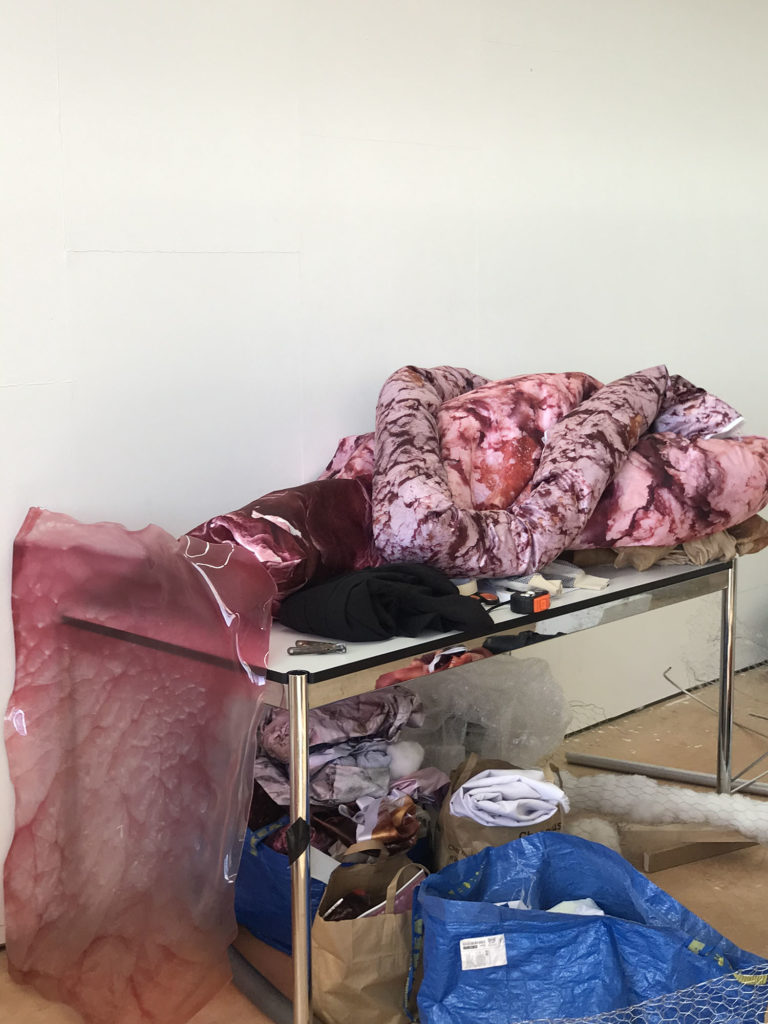

Work in progress
Who are your biggest influences?
There are many people influencing me, including a great number of tutors I met during both BA and MA! Significantly, there've been many strong female artists inspiring me in the past such as Louise Bourgeois, Alina Szapocznikow, and Katarzyna Kobro. Nowadays it's rather activists and theorists of topics I explore such as Karen Barad, Donna Haraway, Stacy Alaimo, Astrida Neimanis, Ervin Manning to name a few.
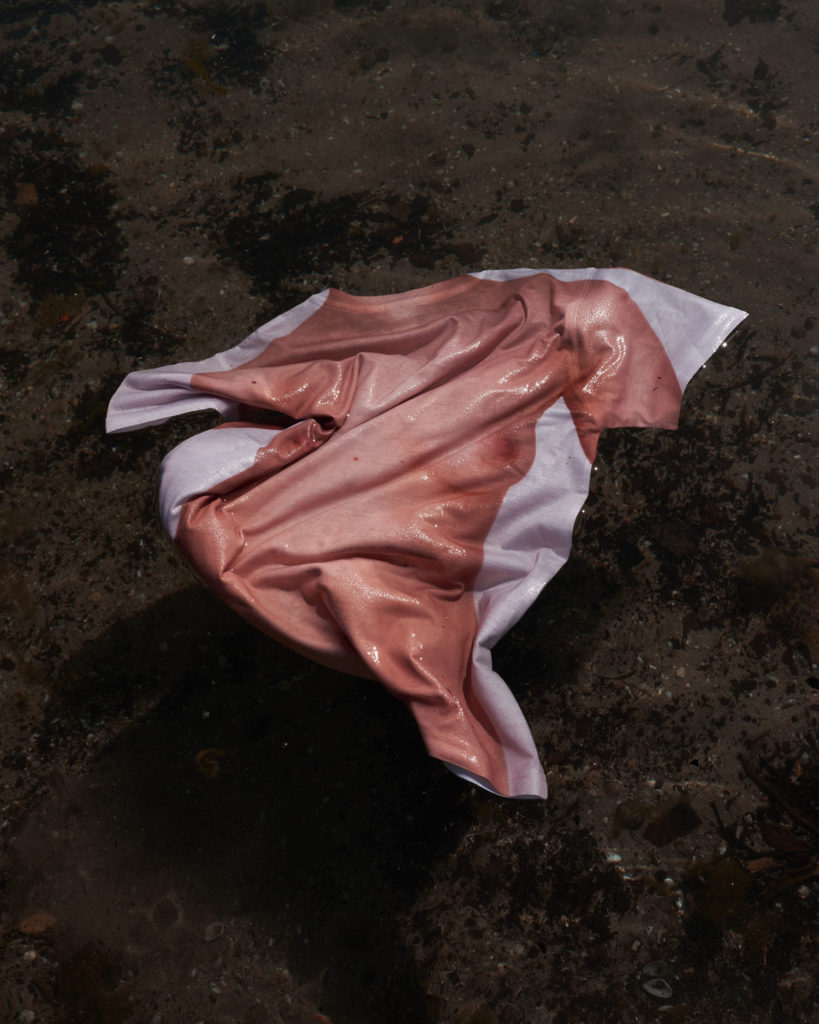
Sense the back of your spine, 2020, inkjet print, 50 x 70
How will Innovate Grant contribute to your practice?
First of all, it's so heartwarming and motivating to be selected and receive this support from Innovate Grant, thank you so much! Actually, it comes at a perfect time of developing a project and will contribute to a series of 3D printed sculptures - fictional organs of my body.
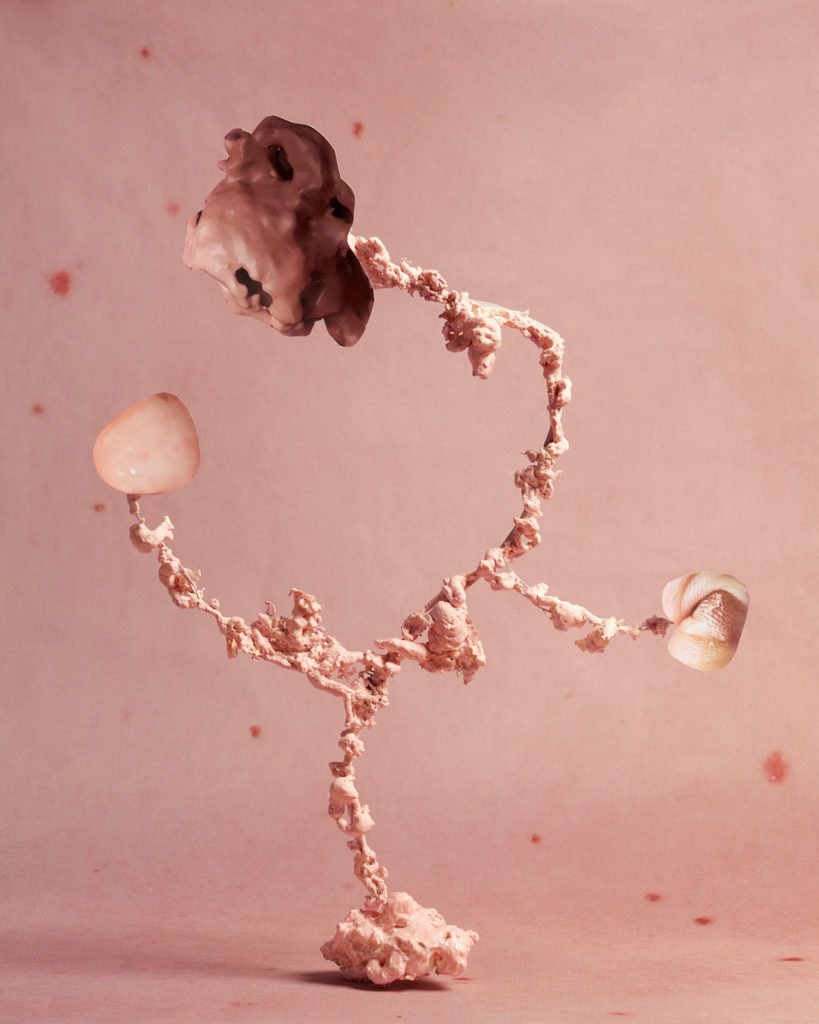
Influx and Inflow, 2020, inkjet print, 50 x 70
What’s the best piece of advice you’ve been given?
To trust yourself and the process.
What is the best advice you would give to other artists?
To trust yourself and the process. And to be curious and stay open!
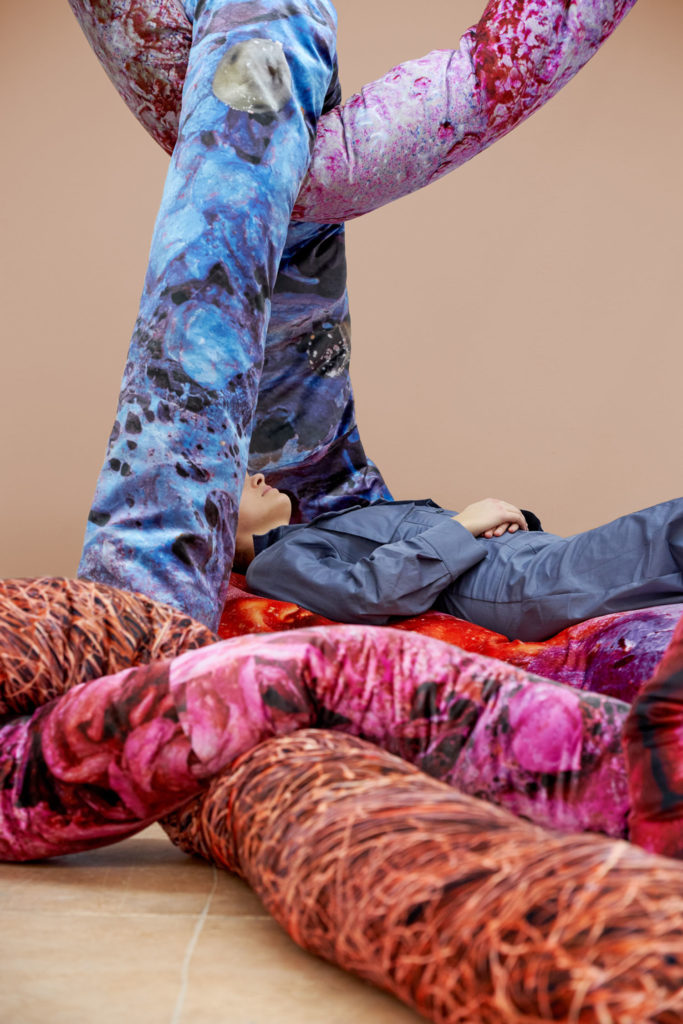
Lactobacillus Crispatus, Lactobacillus Iners, Lactobacillus Jensenii or Lactobacillus Gasseri installation, 2021, digital print on velvet fabric, cotton wool
View Joanna Wierzbicka Portfolio
Stay up to date with Joseph Rovegno
Instagram @joanna_wierzbicka
www.joannawierzbicka.com